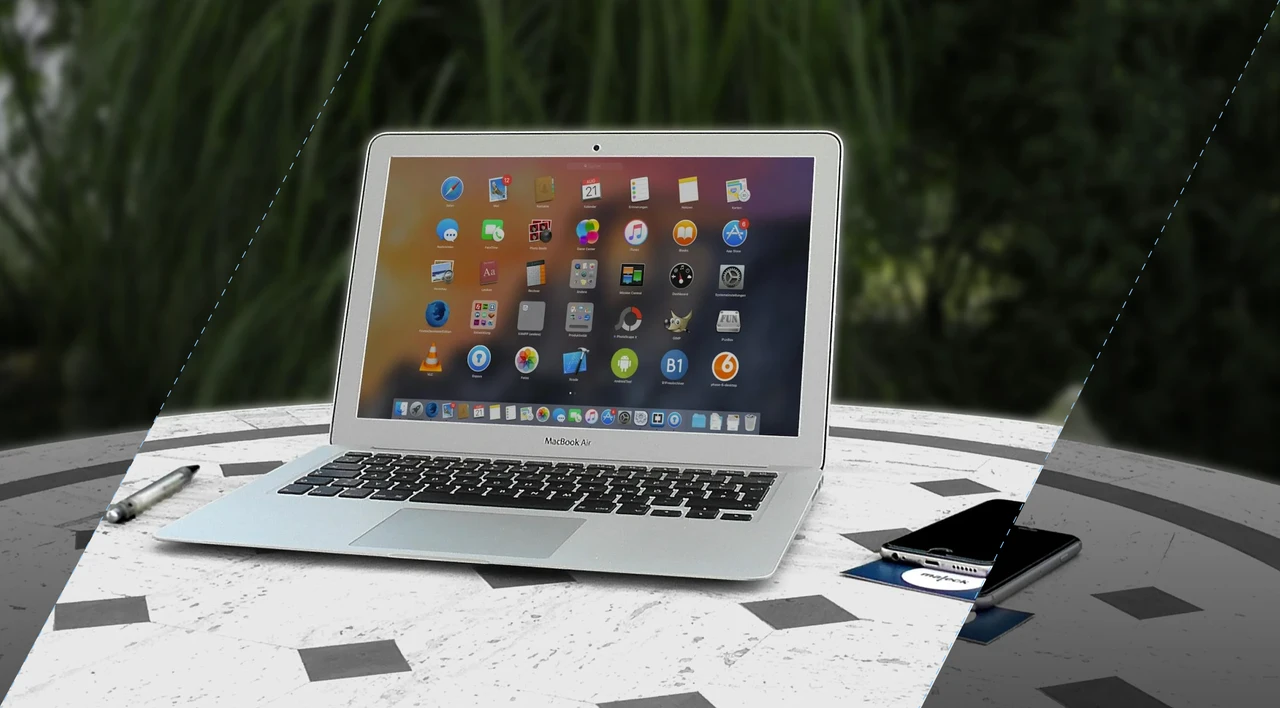SHARE
Exploring Top Minimum Viable Product Examples

Contents
Contents
With 90% of all startups failing, have you ever wondered why some achieve remarkable success while others struggle to gain traction? What if we told you that building a minimum viable product (MVP) could be the key to startup success?
In this article, we will delve into the world of MVPs, uncovering the benefits they offer and the different types that startups can employ. We will also showcase successful examples from leading startups that started with a minimal version of their product and went on to achieve phenomenal growth.
Key Takeaways:
- Building an MVP can provide valuable insights and feedback from early users.
- There are various types of MVPs that startups can choose from based on their business model and requirements.
- Successful startups like Amazon, Turo, Dropbox, Foursquare, and AdWords Express utilized MVPs to validate their ideas and iteratively improve their products.
- An MVP allows startups to minimize risks, release products faster, and make informed decisions based on validated learnings.
Why Build an MVP?
Building a minimum viable product (MVP) provides numerous benefits for startups. 34% of small businesses that fail lack the proper product-market fit. By launching an MVP, you can strategically time the market, assess initial demand, and gather invaluable feedback from early users.
One of the major advantages of developing an MVP is the reduction in overall product development costs. Instead of investing large sums of money into building a fully-featured product, an MVP allows you to start with only the core functionalities, minimizing expenses and financial risks.
An MVP also attracts investors who prefer tangible products over mere ideas. By having a functional MVP, you demonstrate proof of concept and provide potential investors with a concrete representation of your product, which can significantly increase your chances of securing funding.
Furthermore, building an MVP enables you to get your product to market faster. With a minimal version of your product, you can quickly test the market and gather insights, allowing you to iterate and make informed decisions about future product development.
Embracing startup MVP development can lead to substantial cost savings and faster time-to-market, as illustrated in the table below:
|
Product Development Phase |
MVP |
Full-Featured Product |
|
Time to Develop |
Shorter |
Longer |
|
Development Costs |
Lower |
Higher |
|
Financial Risks |
Minimal |
Higher |
|
User Feedback |
Early and Continuous |
Delayed |
By building an MVP, you can validate your idea and gather feedback from real users, allowing you to refine your product based on their preferences. This iterative approach maximizes the likelihood of developing a product that meets market demands and user needs.
Types of MVPs
50% of all product launches fail to hit business targets. When building a minimum viable product (MVP), startups have the flexibility to choose from different types of MVPs based on their specific business model and requirements. Each type of MVP serves a unique purpose in validating the viability of a product idea. Let’s explore some of the most common types of MVPs:
- Concierge MVP: The concierge MVP involves manually assisting users to accomplish their goals, without the need for a fully developed product. This type of MVP allows startups to deliver personalized experiences and collect valuable user feedback while creating a minimal version of their product.
- Wizard of Oz MVP: The wizard of oz MVP creates the illusion of a fully functional product by manually performing tasks that would typically be automated. Startups can test multiple MVP ideas and gather user feedback without investing significant resources in product development and design.
- Landing Page MVP: With a landing page MVP, startups can test the demand for their product idea by collecting user interest through a simple landing page. This type of MVP allows startups to gauge market interest, validate their value proposition, and build an initial user base.
- Email MVP: An email MVP involves manually sending emails to potential users to gauge their response and interest in a product idea. By manually engaging with users through personalized emails, startups can gather feedback, validate assumptions, and refine their product offering.
- Piecemeal MVP: The piecemeal MVP leverages existing resources and tools to develop a basic version of the product. Startups can test the core functionality of their product idea by integrating existing technologies and validating its market viability before investing in further development.
- Single-Feature MVP: A single-feature MVP focuses on testing and validating the demand for specific features or functionalities of a product. By developing a minimal version with one key feature, startups can gather user feedback and analyze user engagement to make informed decisions about product development and future iterations.
Each type of MVP offers its own advantages and serves a specific purpose in the product development cycle. Startups should carefully evaluate their business model and requirements to choose the most suitable type of MVP that aligns with their objectives and target market.
Amazon
Amazon, currently valued at $1.96 trillion, is known today as a vast online marketplace offering a wide range of products. However, Amazon began as a minimum viable product (MVP) in the early 1990s, initially focusing solely on selling books online. Books were chosen due to their affordability, diverse selection, and high demand.
Jeff Bezos, Amazon’s founder, started on a shoestring budget and tested his idea through a simple website. This MVP approach allowed him to gauge market response and gather valuable user feedback. As demand for books grew, Amazon gradually expanded its product offerings and continuously enhanced its website.
Today, Amazon has become the world’s largest online marketplace, selling everything from electronics to clothing to home goods. Their success story illustrates the power of starting small with an MVP and iterating based on user preferences and needs.
Turo
Turo, the world’s most popular peer-to-peer car rental platform, exemplifies a true success story. Valued at $1.2 billion in 2019, Turo began with a simple idea: addressing the issue of unused parked cars and the lack of available car rentals due to insurance complications. After 18 months of dedicated effort, the founders launched RelayRides, which later rebranded as Turo.
Today, Turo boasts over 10 million users and a fleet exceeding 350,000 vehicles. With an estimated annual revenue of around $900 million, Turo’s remarkable achievements highlight the power of their MVP-driven approach.
|
Statistics |
Numbers |
|
Registered Users |
10 million+ |
|
Fleet Size |
350,000+ |
|
Annual Revenue |
$900 million+ |
Turo’s success story serves as a testament to the effectiveness of building an MVP. By starting with a minimum viable product and continuously iterating based on user feedback, Turo was able to create a thriving platform that benefits both car owners and renters alike.
Dropbox
Dropbox, a popular file-hosting service, has become a renowned success story for its innovative approach to cloud-based file syncing. Dropbox now has 700 million registered users across 180 countries. The company’s journey began with the creation of a minimum viable product (MVP) in the form of a video.
In order to test the demand and feasibility of a cloud-based file syncing service, the founders of Dropbox decided to develop a simple video presentation instead of investing in a full infrastructure. This MVP approach allowed them to validate their idea and gather crucial user feedback without incurring significant costs upfront.
The video, outlining the core functionality and benefits of Dropbox, quickly gained traction, attracting over 70,000 signups. This overwhelming response provided the founders with valuable insights and confirmation that there was a market need for their service.
Using the feedback received from early users, Dropbox continued to iterate and improve their product, adding features and functionalities to meet user expectations and demands. Today, Dropbox offers a comprehensive suite of cloud-based features and has established itself as a leader in the file storage industry.
Foursquare
Foursquare, a location-based social network, started with a single-feature MVP. The initial app allowed users to check-in, share their locations, and earn badges. Today, Foursquare boasts 55 million monthly unique users.
When Foursquare launched its MVP, it offered a unique way for users to explore and share their favorite places. The check-in feature allowed users to let their friends know where they were and what they were up to. By incorporating badges into the app, Foursquare introduced gamification, encouraging users to check-in to various locations and unlock achievements.
As Foursquare gained popularity, it continued to improve and expand its offerings. It transformed from a simple check-in app into a comprehensive city guide, providing users with recommendations, reviews, and tips for restaurants, bars, and other places of interest.
The Importance of an MVP
14%of startups fail due to not regarding customers’ needs. Launching a Minimum Viable Product (MVP) is crucial for startups due to its ability to provide validated learnings about customers and their needs. By introducing an MVP to the market, you can gather real-life data and receive valuable feedback from early users, allowing you to make informed decisions about your product’s direction.
The process of building an MVP and soliciting customer feedback enables startups to iteratively improve their product based on user preferences. This iterative approach minimizes the risk of developing a product that doesn’t align with customer needs or lacks market demand. By continuously enhancing your MVP, you are more likely to create a product that customers want and are willing to use.
The value of customer feedback in MVP development cannot be overstated. Through user feedback, you can gain insight into pain points, feature requests, and improvement opportunities. These insights provide invaluable guidance for refining and enhancing your product, ensuring that it caters to your target audience.
|
Benefits of an MVP: |
|
1. Gathering real-life data |
|
2. Receiving valuable customer feedback |
|
3. Iteratively improving based on user preferences |
|
4. Minimizing the risk of developing unwanted products |
|
5. Enhancing market fit and increasing adoption |
Common Mistakes in MVP Development
When it comes to developing a Minimum Viable Product (MVP), startups often make some common mistakes that can hinder their progress. It’s important to differentiate an MVP from other types of minimum products like the minimum marketable feature or the proof of concept. 58% of IT executives said they always use POCs as a key evaluation tool for startups.
One common mistake is confusion with other product types. Startups may mistakenly consider a minimum marketable feature or a proof of concept as an MVP. While these product types have their own value, they are different from an MVP in terms of goals and scope. An MVP focuses on creating a minimal version of the product that delivers core value to users, while other types may have different objectives.
Another common mistake is not implementing feedback received from early users. Feedback is a crucial part of MVP development as it provides valuable insights and helps refine the product based on validated learnings. Not acting on this feedback can result in missed opportunities to improve the product and meet user needs.
To avoid these common mistakes, it’s important to have a clear understanding of what constitutes an MVP and to actively incorporate user feedback into the development process. By doing so, startups can increase their chances of building a successful product that meets customer needs and stands out in the market.
Conclusion
Exploring minimum viable product (MVP) examples demonstrates their significant impact on startup success. By building an MVP, startups can validate ideas, gather crucial user feedback, and make informed decisions about future development.
Using an MVP allows startups to focus on core functionalities, test business concepts, and engage early users for valuable feedback. This approach enables quicker release cycles, reduces development risks, and supports data-driven decision-making.
In summary, incorporating an MVP into your startup strategy can greatly enhance your chances of success. Learning from successful examples and embracing the benefits of MVP development allows you to validate ideas, refine your product through user feedback, and ultimately meet the needs of your target market.
Discover how Flatirons’ startup MVP development service can create custom web and mobile applications for startups on time and on budget.
Frequently Asked Questions
What is a minimum viable product (MVP)?
A minimum viable product is a simplified version of a product that includes only the core features necessary to deliver value to early users and gather feedback for future development.
Why is building an MVP beneficial for startups?
Building an MVP allows startups to validate their ideas, gather user feedback, reduce product development costs, attract investors, and get to market faster.
What are the different types of MVPs?
The different types of MVPs include concierge MVP, wizard of oz MVP, landing page MVP, email MVP, piecemeal MVP, and single-feature MVP.
Can you provide an example of a successful MVP?
Amazon started as an MVP by selling books online, while Turo launched as a P2P car rental platform. Dropbox tested its concept through a video, and Foursquare began with a single-feature MVP for check-ins and location sharing.
What are common mistakes in MVP development?
Common mistakes in MVP development include confusing the concept of an MVP with other types of minimum products, such as the minimum marketable feature or the proof of concept. Another mistake is not implementing the feedback received from early users, which is crucial for refining the product based on validated learnings.
What are the benefits of building an MVP?
The benefits of building an MVP include maintaining clarity and focus on core functionalities, testing the business concept, engaging with early users for valuable feedback, enabling quicker releases, reducing risks in product development, and making informed decisions based on validated learnings.
Startup MVP Development
Flatirons Development provides MVP development services for innovative startups.
Get the CEO's Take
Handpicked tech insights and trends from our CEO.
Startup MVP Development
Flatirons Development provides MVP development services for innovative startups.
Get the CEO's Take
Handpicked tech insights and trends from our CEO.

Secure Mobile App Development: Prioritizing Data Protection
Flatirons Development
Oct 22, 2025
What is Data Ingestion? Definition, Types, and Best Practices for Efficient Data Processing
Flatirons Development
Oct 16, 2025
Enterprise Computing: Transforming Business Operations
Flatirons Development
Oct 09, 2025
Explore the Top Embedded Systems Examples of Today
Flatirons Development
Oct 04, 2025
Best Manual Testing Tools to Boost Your Software Quality
Flatirons Development
Sep 28, 2025
Digital Product Development: Enhance Your Business Offerings
Flatirons Development
Sep 12, 2025
Secure Mobile App Development: Prioritizing Data Protection
Flatirons Development
Oct 22, 2025
What is Data Ingestion? Definition, Types, and Best Practices for Efficient Data Processing
Flatirons Development
Oct 16, 2025
Enterprise Computing: Transforming Business Operations
Flatirons Development
Oct 09, 2025
Secure Mobile App Development: Prioritizing Data Protection
Flatirons Development
Oct 22, 2025
What is Data Ingestion? Definition, Types, and Best Practices for Efficient Data Processing
Flatirons Development
Oct 16, 2025
Enterprise Computing: Transforming Business Operations
Flatirons Development
Oct 09, 2025
Secure Mobile App Development: Prioritizing Data Protection
Flatirons Development
Oct 22, 2025
What is Data Ingestion? Definition, Types, and Best Practices for Efficient Data Processing
Flatirons Development
Oct 16, 2025
Enterprise Computing: Transforming Business Operations
Flatirons Development
Oct 09, 2025